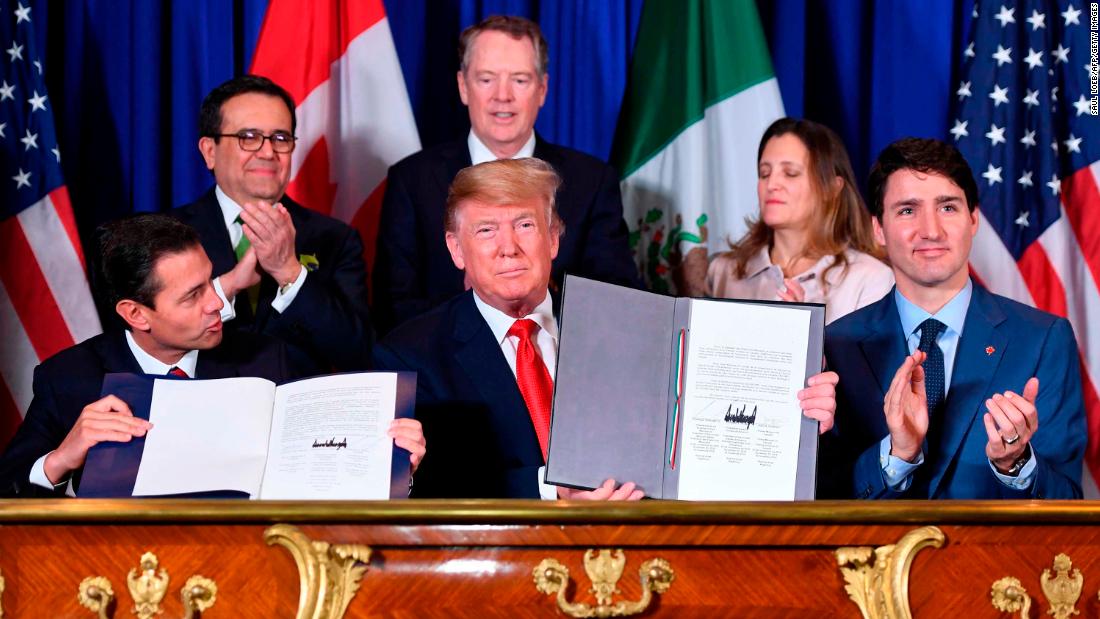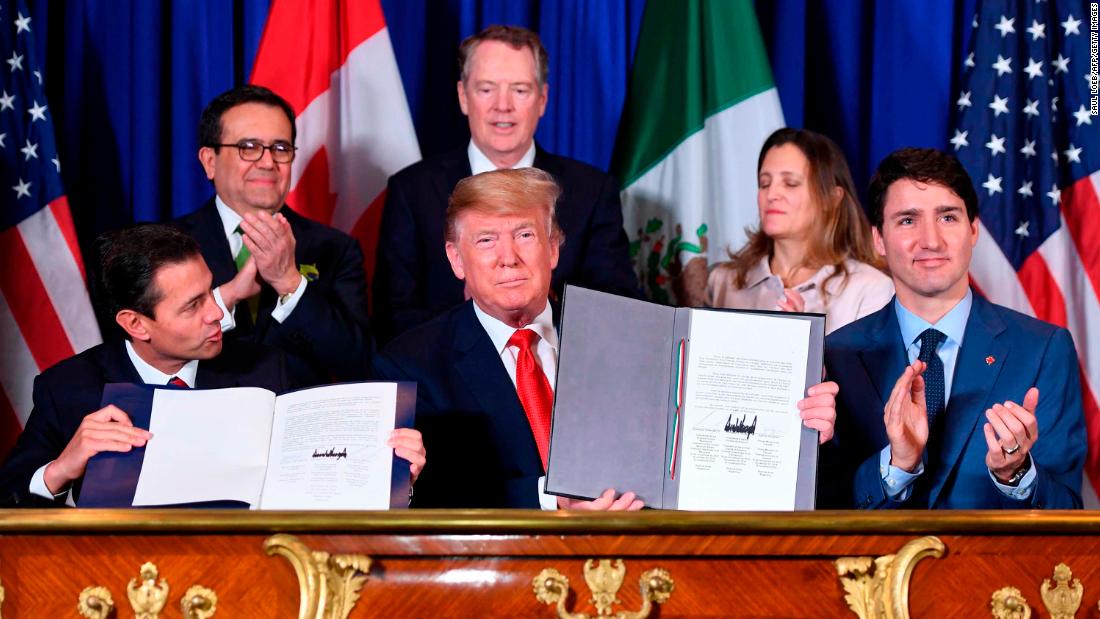[ad_1]

House Speaker Nancy Pelosi echoed that view, saying in her announcement that “there is no question of course that this trade agreement is much better than NAFTA.”
The USMCA requires 75% of a vehicle’s parts to be made in one of the three countries — up from the current 62.5% rule — in order to remain free from tariffs when moving between the three signatory countries.
It also requires more vehicle parts to be made by workers earning at least $16 an hour, which may provide a boost to manufacturing in the United States, where wages are higher than in Mexico.
The International Trade Commission report found that these changes would add 28,000 jobs in the industry over six years, while also leading to a small increase in the price of vehicles that consumers pay.
But the American Automotive Policy Council, which represents General Motors, Ford and Fiat-Chrysler, argued the ITC report underestimated the long-term investments US automakers will make because of the USMCA.
On Tuesday, the trade group said the big three automakers were “pleased” that the USMCA was moving forward.
“The USMCA allows the US auto industry to remain globally competitive by ensuring vehicles and auto parts are able to move freely across country lines,” said Matt Blunt, president of the American Automotive Policy Council, in a statement
A GM spokesperson said Tuesday that the company had already made numerous changes in anticipation of the more stringent standards set by the USMCA, including shifting production plans of a new Chevrolet electric vehicle back to the United States, and building a new GM/LG battery plant near Lordstown, Ohio.
Labor laws strengthened
Manufacturing workers have long blamed NAFTA for sending jobs to Mexico, where wages are lower, and it was a priority for Democrats that the USMCA strengthen the enforcement of labor rules, creating a more level playing field for American workers.
Lawmakers were able to include some changes to enforcement language before coming to an agreement Tuesday with the Trump administration, and the deal now has the backing of the AFL-CIO, the largest federation of unions in the US.
“For the first time, there truly will be enforceable labor standards — including a process that allows for the inspections of factories and facilities that are not living up to their obligations,” said AFL-CIO President Richard Trumka in a statement.
The deal struck by Democrats provides for an interagency committee that will monitor Mexico’s labor reform implementation and compliance with labor obligations and a set of benchmarks for Mexico to meet in implementing the reforms.
Dairy farmers get more market access
The original NAFTA eliminated tariffs on most agricultural products traded among the three countries. Canada and Mexico are already the two biggest export markets for US farmers and ranchers.
The USMCA will keep those tariffs at zero, while also further opening up the Canadian market to US dairy, poultry and eggs. In return, the United States will allow more Canadian dairy, peanuts and peanut products, as well as a limited amount of sugar, to cross the border.
Updating NAFTA for the digital era
The USMCA includes sweeping new benefits for the technology sector, in a chapter on digital trade that wasn’t a part of the original NAFTA. The new provisions aren’t expected to directly create new jobs, but could provide a boost to US businesses in other ways.
For example, the new trade deal prohibits Canada and Mexico from forcing US companies to store their data on in-country servers. It also ensures that US companies cannot be sued in Canada and Mexico for much of the content appearing on their platforms — a legal protection Pelosi had pushed to exclude from USMCA amid an ongoing debate at home about whether tech companies still deserve that liability shield under domestic law.
Congress keeps control over biologic drugs
Democrats negotiated the removal of what would have been new, controversial protections for biologic drugs. They argue it would have hamstrung Congress from being able to legislate on drug pricing issues.
The provision that was removed from the trade deal would have required the three countries to provide at least 10 years of exclusivity for biologics, which are complex and costly to make. Currently, the US provides 12 years of exclusivity, while Canada provides eight years and Mexico five years.
Republicans have long supported including exclusivity provisions for pharmaceutical companies in trade deals, and the pharmaceutical industry quickly came out against the provision’s removal.
“Eliminating the biologics provision in the USMCA removes vital protections for innovators while doing nothing to help US patients afford their medicines or access future treatments and cures,” said Stephen Ubl, CEO of PhRMA, a trade group. “The only winners today are foreign governments who want to steal American intellectual property and free ride on America’s global leadership in biopharmaceutical research and development.”
CNN’s Vanessa Yurkevich and Holmes Lybrand contributed to this story.
[ad_2]
Source link

